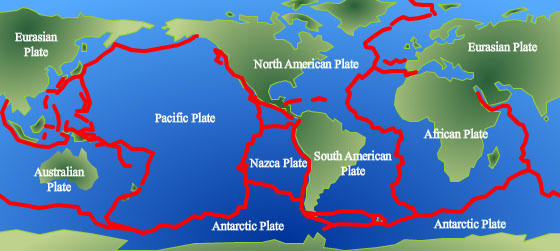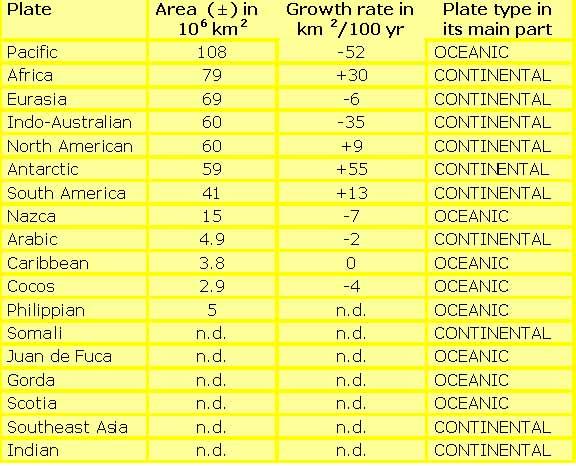
In addition to the large plates listed above there another three dozen of small plates or microplates such as Okhotsk, Amur, Yangtze, Okinawa, Suna, Burma, Molucca Sea, Banda Sea, Timor, Birds Head, Maoke, Caroline, Mariana, North Bismarck, Manus, South Bismarck, Solomon Sea, Woodlark, New Hebrides, Conway Reef, Balmoral Reef, Futuna, Niuafo’ou, Tonga, Kermadec, Rivera, Galapagos, Easter, Juan Fernandez, Panama, North Andes, Altiplano, Shetland, Sandwich, Aegean Sea and Anatolia. Furthermore there are areas such as the Alps-Persia-Tibet mountain belt, the Philippine Islands, the Peruvian Andes, the Sierras Pampeanas, or the California-Nevada zone, which are more likely designated as orogens rather than plates or microplates.

|
|